Indian Wild Asses
(Equus hemionus khur)
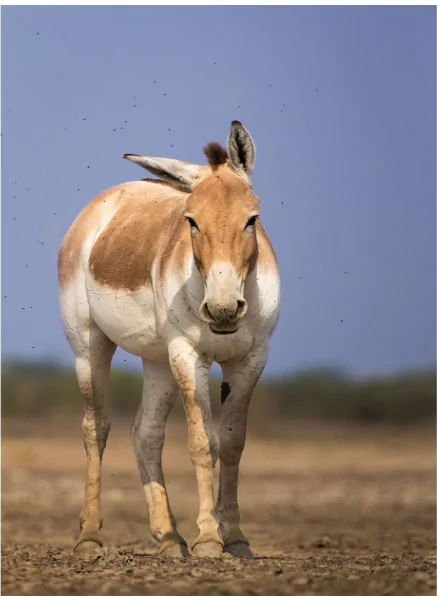
|
Context: The population of wild asses in Gujarat was estimated at 7,672 as per the 10th Wild Ass Population Estimation (WAPE).
Key Findings:
- This marks a 26.14% increase from the 6,082 recorded in the 2020 estimation.
- Surendranagar district had the highest number of wild asses at 2,705, followed by Kutch (1,993), Patan (1,615), Banaskantha (710), Morbi (642), and Ahmedabad (7).
About Indian Wild Asses:
- A subspecies of the Asian Wild Ass, known scientifically as Equus hemionus khur.
- Identified by distinctive white markings on the anterior part of the rump, posterior part of the shoulder, and a stripe down the back bordered by white.
- Distribution: The world’s last population of Indian Wild Asses is restricted to the Rann of Kachchh in Gujarat, India.
- Habitat: Inhabit desert and grassland ecosystems.
- Conservation Status:
-
- IUCN: Listed as Near Threatened.
- CITES: Listed under Appendix II.
- Wildlife Protection Act (1972): Classified under Schedule-I.
Worldwide Species: There are three species of wild ass:
- One in Africa: Equus africanus
- Two in Asia: Equus hemionus and E. kiangs.
About Wild Ass Sanctuary:
- Located in the Little Rann of Kutch, Gujarat.
- The only place where the Indian Wild Ass, locally called Khacchar, is found.
- The sanctuary is home to Rabari and Bharwad tribes.
|
Central Electricity Regulatory Commission
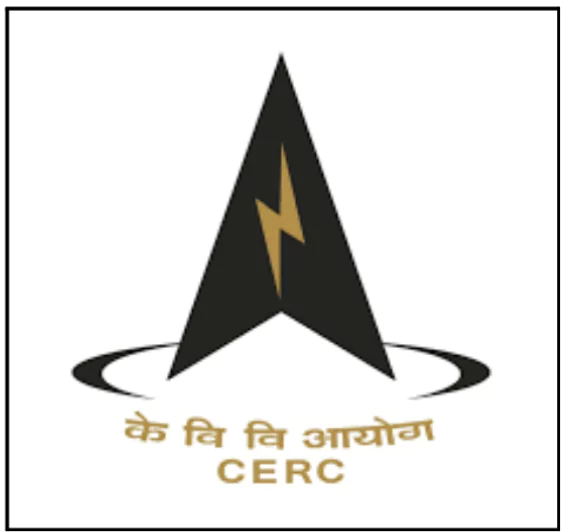
|
Context: The Central Electricity Regulatory Commission (CERC), appointed a single-member bench to assess the preparedness of stakeholders in handling sudden surges in power demand.
About Central Electricity Regulatory Commission (CERC)
- Statutory body: Established under the Electricity Regulatory Commissions Act, 1998 by the Government of India.
- Composition: Comprises a Chairperson and four other members, including the Chairperson of the Central Electricity Authority as an ex-officio member.
- Role:
- Promote competition, efficiency, and economy in bulk power markets.
- Improve the quality of power supply and encourage investments.
- Advise the government on removing institutional barriers to bridge the demand-supply gap, benefiting consumers.
- Regulator: CERC acts as the regulator for India’s power sector.
Electricity Act 2003
- A central law governing India’s electricity sector.
- Establishes Electricity Regulatory Commissions at both central (CERC) and state levels (SERCs).
|
| India-UAE High Level Joint Task Force on Investments

|
Context: The 12th Meeting of the India-UAE High Level Joint Task Force on Investments took place in Mumbai recently.
Key Outcomes of 12th meeting:
- Digital Payment Collaboration:
- National Payments Corporation of India (NPCI) is collaborating with Al Etihad Payments (AEP) for creating a JAYWAN card scheme in UAE, based on India’s RuPay system.
- Invest India Office in Dubai:
- India will open an Invest India office in Dubai, the first in the Middle East, to facilitate UAE investments in India.
- Food Parks: Food parks among areas for greater collaboration and investments between India and UAE.
- Abu Dhabi Investment Authority (ADIA) to establish a subsidiary at GIFT City.
About India-UAE High Level Joint Task Force on Investments:
- The task force was established in 2013
- Objective: To enhance trade, investment, and economic relations between India and UAE.
|
| Halari Donkey
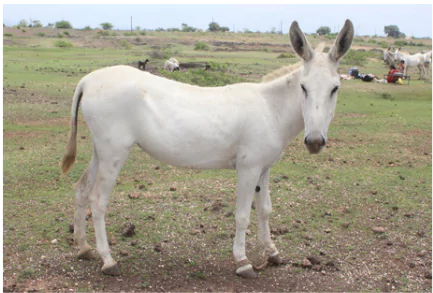
|
Context: The Halari donkeys are considered to be intelligent animals which work closely with human beings.
About Halari donkey:
- Halari donkeys are endangered, with a population of fewer than 500.
- Origin: Native to the Halar region of Gujarat, India, particularly in the Jamnagar and Dwarka districts.
- Physical characteristics:
-
- They are white with black muzzles and hooves.
- They have a strong build and are large in size
- Appearance: Typically white, larger, and more resilient than other donkey breeds.
- Social behaviour: Form close bonds with humans and often work closely with their owners.
- Milk: Its milk is known for its sweetness and high lactose content.
- It is used to make milk powder and cosmetic products.
- The milk powder can fetch high value in the international market.
- Conservation: The National Bureau of Animal Genetic Resources and the Sahjeevan Trust are involved in the breeding and conservation of Halari donkeys.
- Demand: There is demand from other parts of the country to set up Halari donkey dairies.
|
SECL’s Major Green Initiative: Over 1.46 Lakh Saplings Planted Under “Ek Ped Maa Ke Naam”
|
Context: In alignment with the Prime Minister ‘s visionary “Ek Ped Maa Ke Naam” campaign, South Eastern Coalfields Limited (SECL) has planted a staggering 1,46,675 saplings across its operational areas in Chhattisgarh and Madhya Pradesh.
About “Ek Ped Maa Ke Naam”:
- Campaign Name: #एक_पेड़_मां_के_नाम (#Plant4Mother).
- Launch Date: World Environment Day, 5th June 2024.
- Objective: To promote tree plantation as a tribute to mothers and Mother Earth, fostering environmental consciousness and sustainable practices.
- Purpose: To honour mothers and contribute to environmental conservation.
- The plantation efforts under “Ek Ped Maa Ke Naam” were further strengthened as part of the 2024 “Swachhata Hi Seva” campaign, an essential cleanliness initiative.
About South Eastern Coalfields Limited (SECL):
- SECL is a public sector undertaking (PSU) and one of the largest coal producers in India.
- Coal reserves: SECL’s coal reserves are spread across Chhattisgarh and Madhya Pradesh.
- Mines: SECL has 92 mines, including 70 underground, 21 opencast, and 1 mixed.
- Kusmunda mine, the world’s fourth-largest coal mine
- Headquarters: Bilaspur, Chhattisgarh.
- Subsidiary: Subsidiary of Coal India Limited.
- Administrative control: Under the administrative control of the Ministry of Coal.
- PSU Status: “Miniratna”
|
Hurricane Milton explodes into a powerful Category 5 storm as it heads for Florida
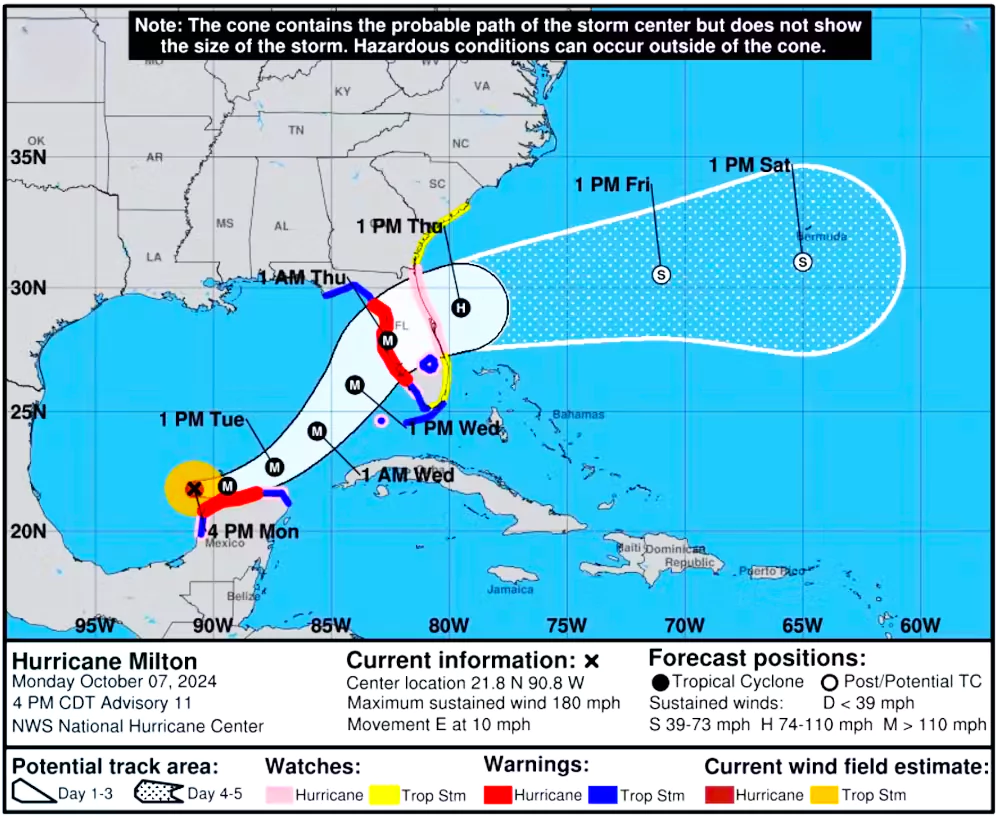
|
Context: Hurricane Milton went from barely hurricane strength to a dangerous Category 5 storm in less than 24 hours as it headed across the Gulf of Mexico towards Florida.
About Rapid intensification (RI):
- Rapid Intensification (RI): Defined by the U.S. National Weather Service as an increase in a tropical cyclone’s maximum sustained wind speed by at least 30 knots (~35 mph) within 24 hours.
- This can escalate a storm from Category 1 to Category 3 on the Saffir-Simpson scale in a short period.
Causes of Rapid Intensification:
- Ocean Heat:
- Warm sea surface temperatures, especially when warm water extends into deeper layers, provide energy for storms to intensify.
- Example: In the Gulf of Mexico, sea surface temperatures were 30°C (86°F) during Hurricane Milton’s intensification.
- Wind Shear:
- Wind shear refers to changes in wind speed or direction with height.
- Low wind shear allows storms to organise and grow, while strong wind shear can disrupt them.
- Salinity:
- Warmer sea surface temperatures and lower salinity increase moisture availability for storms, fueling intensification.
- Lower salinity traps heat at the surface, enhancing storm strength.
- Thunderstorm Activity:
-
- Bursts of intense thunderstorms within the cyclone can reorganise its circulation, accelerating intensification.
Saffir-Simpson Hurricane Wind Scale (SSHWS):
- The SSHWS was developed in 1971 by civil engineer Herbert Saffir and meteorologist Robert Simpson.
- It is a tool used by meteorologists to categorise and communicate the strength of hurricanes/cyclones.
- Introduced in the early 1970s to warn the public about tropical cyclone dangers.
- Categorised by maximum sustained wind speed at 10 metres height, with categories 1 to 5.
- Category 1: Minimal hurricane.
- Categories 3 to 5: Major hurricanes with potential for significant loss of life and damage.
- Category 5: Worst-case scenario with catastrophic impact; wind speeds exceeding 252 km/hour, capable of completely razing structures.
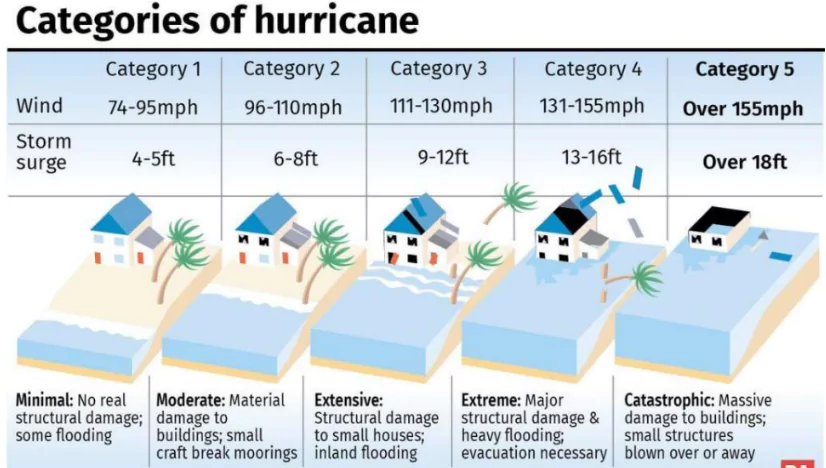
|
![]() 8 Oct 2024
8 Oct 2024
